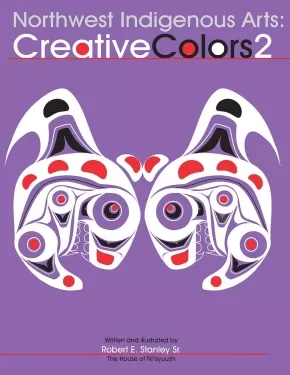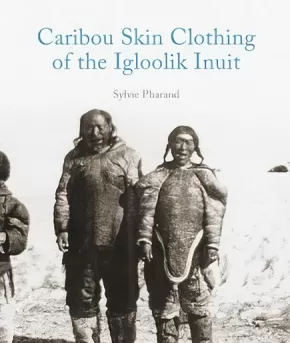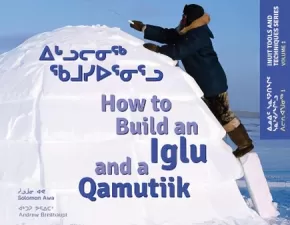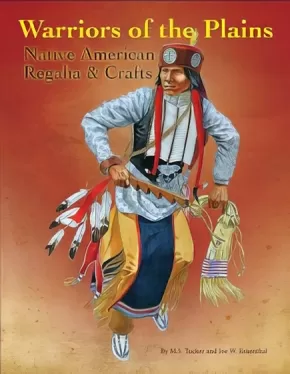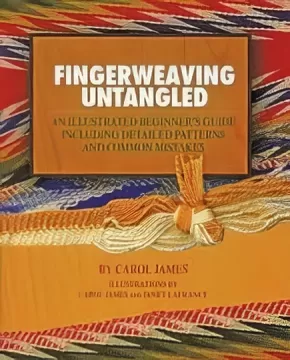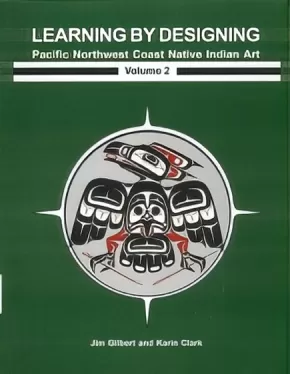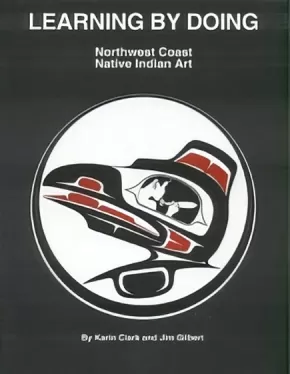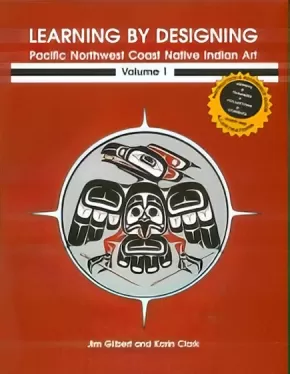
Indigenous Numeracy / Math
1
-
12
of
12 Results;
Sort By
Métis Matriarchs: Agents of Transition
$34.95
Editors:
Format:
Paperback
Text Content Territories:
Indigenous Canadian; Métis;
Reading Level: N/A
ISBN / Barcode: 9781779400116
Synopsis:
Synopsis:
Explores the integral roles that Métis women assumed to ensure the survival of their communities during the fur trade era and onward
Métis Matriarchs examines the roles of prominent Métis women from across Western Canada from the late 19th to the mid-20th century, providing a rare glimpse into the everyday lives of these remarkable women who were recognized as Matriarchs and respected for their knowledge, expertise, and authority within their families and communities.
This edited collection provides an opportunity to learn about the significant contributions made by Métis women during a transitional period in Western Canadian history as the fur trade gave way to a more sedentary, industrialized, and agrarian economy. Challenging how we think about Western Canadian settlement processes that removed Indigenous peoples from the land, this collection of stories examines the ways Métis matriarchs responded to colonial and settler colonial interventions into their lives and livelihoods and ultimately ensured the cultural survival of their communities.
Awards
- 2025 Canadian Historical Association Indigenous History Book Prize
Reviews
“A nuanced account of the lives of Métis women and their vital roles as they helped guide their families and communities through generations of transitions.” —Michel Hogue, author of Metis and the Medicine Line
"This is a wonderful resource for Social Studies, as these stories help understand how changes in government, land, and economic systems have impacted Métis communities across Canada. Métis Matriarchs would also be a good fit for Family Studies, as it allows us to understand the importance of matriarchs in society, including family and community dynamics, and how those have shifted through time." - Shaniah H., K-12 Teacher, Indigenous Books for Schools
Educator Information
This book is included in the Indigenous Books for Schools database from the Association of Book Publishers of BC. It is recommended for Grades 10 to 12 for Family Studies and Social Studies.
Additional Information
336 pages | 5.00" x 8.00"| Paperback
Northwest Indigenous Arts: Creative Colors 2
$5.95
Artists:
Format:
Paperback
Text Content Territories:
Indigenous Canadian; First Nations; Nisga'a;
Reading Level: N/A
ISBN / Barcode: 9780888395337
Synopsis:
Synopsis:
The second coloring book in the Northwest Native Arts Series. Learn about some of the real and legendary creatures revered by the natives of the west coast by using these templates to create spectacular pictures.
Educator & Series Information
This book would work best with older children or teens.
This is the second book in the Northwest Native Art Series.
Table of Contents
Acknowledgements
Introduction
Basic Shapes
How to make an ovoid
Making the two inside ovoids
The basic U-shape
The U-shape form line for ears, nose and beak
The split U-shape filler design
The L-shape, S-shape and cheek filler designs
Claw designs
Samples of basic eye designs
The basic teeth and tongue designs
The basic head form line
A basic wing form line
A basic tail form line
The Basic Steps for Drawing a First Nations Wolf and Other Designs
The ovoids
Starting the Wolf design
Adding the nose form lines
Placing the ear and forearm ovoid form lines
Placing the forearm U-shape, claw and claw connector
Connecting the forearm to the head and setting the hind leg ovoids
Adding the hind leg U-shape form line and claw
Connecting the forearm to the hind leg
Drawing the upturned tail of the Wolf
Placing the teeth, tongue and filler designs
The Bear
The Frog
The Basic Steps for Drawing a First Nations Eagle Design
The ovoids
Starting the Eagle design
Adding the beak and the ear U-shape form lines
Placing the wing ovoids and the wing U-shapes
Connecting the head to the wing
Adding the wing feather tips
Placing the tail ovoids and adding the U-shape form line
Connecting the tail to the wing and adding the tail feather tips
Adding the claw and connecting it to the tail
Adding the black thin lines and U-shape fillers
The Raven
How to Draw the Killer Whale
Drawing the Killer Whale
Placing the filler designs
Four Creat Tracing
Introduction and instructions
The Eagle, Killer Whale, Wolf and Raven
Four creat head puzzles
The Killer Whale, Wolf, Raven and Eagle
Native Arts Colouring
The Eagle, Killer Whale, Frog and Wolf
Additional Information
24 pages | 8.50" x 11.00" | Paperback
Caribou Skin Clothing of the Iglulik Inuit (2 in Stock)
$29.95
Format:
Paperback
Text Content Territories:
Indigenous Canadian; Inuit; Iglulingmuit (Iglulik Inuit);
ISBN / Barcode: 9781927095171
Synopsis:
Synopsis:
Caribou Skin Clothing of the Iglulik Inuit outlines the various steps involved in the creation of traditional Inuit caribou skin clothing, namely the hunt, preparation, and sewing.
In addition to diagrams and practical instructions, this book is filled with historical information and insights from Elders of the Iglulik region.
Meticulously researched by former Arctic resident and anthropologist Sylvie Pharand, this book can be used as a practical guide to creating caribou skin clothing, as well as a general-interest text for those interested in traditional skin clothing.
How to Build an Iglu and a Qamutiik: Inuit Tools and Techniques, Volume One
$12.95
Artists:
Format:
Paperback
Text Content Territories:
Indigenous Canadian; Inuit;
ISBN / Barcode: 9781927095317
Synopsis:
Synopsis:
The iglu, a traditional winter shelter built in the Arctic for centuries, is a vital part of Inuit culture. The qamutiik, a traditional sled used for hunting, is an essential tool whose versatility and dependability have allowed it to endure over time.
In How to Build an Iglu & a Qamutiik, Solomon Awa provides thorough how-to instructions on building iglus and qamutiiks, along with general background information on their construction and importance to survival. Complete with detailed, clear illustrations, this valuable resource will teach readers to build these structures that are so central to Inuit culture and tradition.
Educator Information
Delivered in a dual-language format of English and Inuktitut.
Additional Information
32 pages | 9.00" x 7.00" | b&w illustrations, colour photographs
maskisina: A Guide to Northern-Style Métis Moccasins
$24.95
Format:
Paperback
Text Content Territories:
Indigenous Canadian; Métis;
ISBN / Barcode: 9781926795119
Synopsis:
Synopsis:
maskisina: A Guide to Northern-Style Métis Moccasins is a follow-up to the highly successful wapikwaniy: A Beginner’s Guide to Métis Floral Beadwork. Much like wapikwaniy, maskisina guides readers, step-by-step, on how to create their very own moccasins. It contains detailed photographs along with each step. It also includes a historic overview of moccasins by Sherry Farrell Racette. Patterns for cutting the correct sizes for the soles and vamps are included in the book.
Educator Information
Grade Level: Secondary/Post Secondary/Adult
Warriors of the Plains: Native American Regalia & Crafts (2 in Stock) - ON SALE!
$18.00 $23.95
Format:
Paperback
Text Content Territories:
Indigenous American; Indigenous Canadian;
ISBN / Barcode: 9781929572243
Synopsis:
Synopsis:
Filled with images both vintage and modern, this book illustrates the magnificent regalia worn by the warriors of the Great Plains. Many of today's powwow dancers incorporate vintage components in their outfits, and the numerous craftwork techniques presented here are sure to provide inspiration for creating contemporary dance and ceremonial regalia. Never before available in this format, the wealth of information in this book (covering beginning, intermediate, and advanced levels of regalia) will guide readers in creating authentic reproductions of the clothing worn by tribes of the Northern, Central, and Southern Plains.
Additional Information
96 pages | 8.45" x 10.80"
Fingerweaving Untangled (3 in stock) - ON SALE!
$19.50 $24.95
Format:
Paperback
ISBN / Barcode: 9780978469504
Synopsis:
Synopsis:
This publication is a welcome addition to the literature on the ancient craft of fingerweaving. Carol James, an accomplished Winnipeg weaver and teacher, has dedicated over 20 years to the art. Her knowledge and sash reproductions are based on the detailed study of historical artifacts and are housed in various heritage institutions such as the Manitoba Museum and the Musee de Saint-Boniface.
The Tipi: Traditional Native American Shelter (1 in stock) - ON SALE!
$17.00 $21.95
Format:
Paperback
Text Content Territories:
Indigenous American; Indigenous Canadian;
ISBN / Barcode: 9781570671746
Synopsis:
Synopsis:
This amazing collection of vintage photographs and historical text presents an overall view of tipi life, from the painted tipis of the Blackfoot and Shoshone in the Southwest to Ojibwa hunting lodges in Canada. Includes instructions on how to construct a tipi.
Additional Information
112 pages | 9.28" x 7.51"
Fingerweaving Basics
$33.95
Format:
Paperback
Text Content Territories:
Indigenous American; Native American;
ISBN / Barcode: 9781929572083
Synopsis:
Synopsis:
Fingerweaving has been practiced by Native Americans for centuries. It requires no sophisticated loom, only the nimble hands of the weaver. Each technique is presented in detail. The instructions are simple and clearly written, and each step is illustrated with color drawings that make the different threads easy to identify. Includes a color photo of each finished weaving. The approach used here makes this craft much more accessible to amateurs who may have wanted to try it but may have been turned off by the complexity of other books on the subject. Several variations are given for chevron stitch, lightning pattern, arrowhead pattern, bead accents, and fringe.
Learning By Designing Vol. 2: Pacific Northwest Coast Native Indian Art
$32.95
Format:
Paperback
Text Content Territories:
Indigenous American; Indigenous Canadian;
ISBN / Barcode: 9780969297949
Synopsis:
Synopsis:
This companion manual to Volume 1 puts First Nations art into deeper cultural context, providing Native Indian philosophy, knowledge and skills foundation, code of ethics, and interviews with a contemporary First Nations family, as well as some aspects of historical context and a description of the Potlatch. A full colour, 16-page creation story with 20 designs is included.
Additional topics include: contemporary design evolution with 50 examples, 20 designs to draw and paint, and a Quick Reference Chart containing over 100 designs.
Learning By Doing: Northwest Coast Native Indian Art
$24.95
Format:
Paperback
Text Content Territories:
Indigenous American; Indigenous Canadian;
ISBN / Barcode: 9780969297918
Synopsis:
Synopsis:
This book contains step-by-step instructions and illustrations on the basics of drawing, designing, painting and carving in the Pacific Northwest Coast Native Indian art style.
Learning by Designing Vol. 1: Pacific Northwest Coast Native Indian Art
$32.95
Format:
Paperback
Text Content Territories:
Indigenous American; Indigenous Canadian;
ISBN / Barcode: 9780969297932
Synopsis:
Synopsis:
This reference and instructional manual contains a detailed thoroughly analysed, well-supported comparisons of the four Pacific Northwest First Nations art styles. There are 800 clear, detailed illustrations accompanied by straightforward copy. Topics include design formalise, ovoids, U shapes, S shapes, heads, body parts, and design formation, as well as a step-by-step "How to Draw" section.
This reference and instructional manual contains a detailed, thoroughly analyzed, well-supported comparison of the four Pacific Northwest First Nations art styles. There are 800 clear, detailed illustrations accompanied by straightforward copy. Topics include design formline, ovoids, U shapes, S shapes, heads, body parts, and design formation, as well as a step-by-step "How to Draw" section.
Sort By




